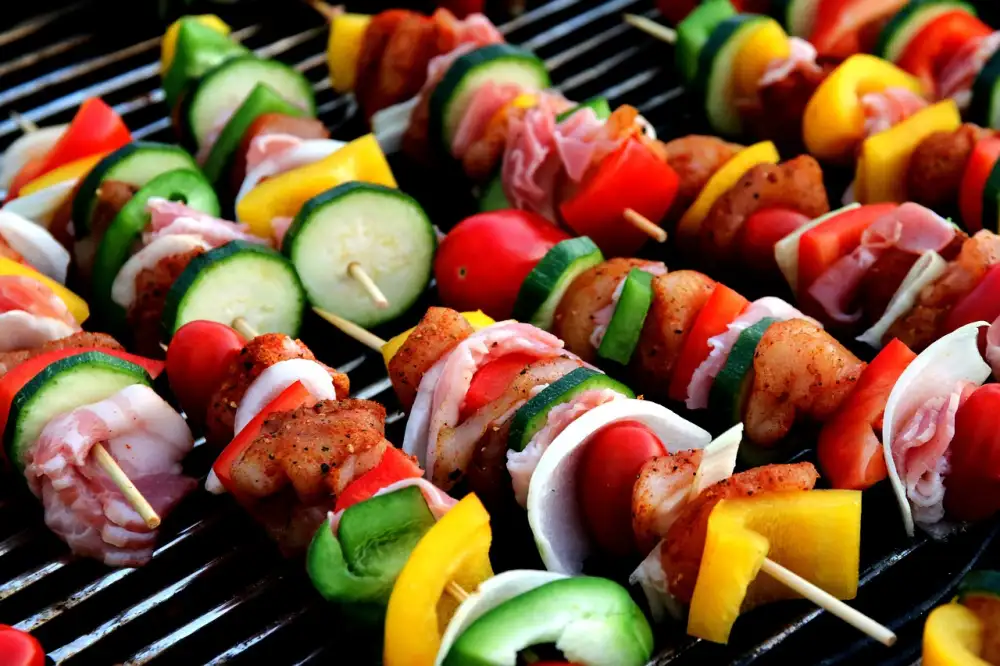Master the Art of Grilling the Perfect Steak: A Step-by-Step Guide

- Select the right cut of steak for grilling.
- Preheat the grill to high heat for optimal searing.
- Season the steak generously with salt, pepper, and any desired herbs or spices.
- Place the steak on the grill and sear each side for a few minutes to lock in juices.
- Lower the heat and continue grilling until the desired level of doneness is achieved.
- Use a meat thermometer to ensure the steak reaches the preferred internal temperature.
- Let the steak rest for a few minutes before slicing and serving to allow the juices to redistribute.
Select the right cut of steak for grilling.
When it comes to grilling the perfect steak, selecting the right cut is crucial. Opt for cuts like ribeye, New York strip, or filet mignon for their marbling and tenderness. Marbling refers to the white streaks of fat within the muscle fibers, enhancing flavor and juiciness during cooking. Ribeye is known for its rich flavor due to higher fat content, while New York strip offers a balance of tenderness and beefy flavor. Filet mignon is prized for its buttery texture but has less fat compared to ribeye and New York strip. Consider your preference for tenderness, flavor, and budget when choosing the ideal cut for grilling.
Preheat the grill to high heat for optimal searing.
Preheating the grill to high heat is essential for achieving the perfect sear on your steak. This process helps to caramelize the outer layer of the meat, creating a flavorful crust while sealing in the juices. By preheating the grill, you ensure that the surface of the steak comes into direct contact with intense heat, resulting in those coveted grill marks and a delicious charred flavor. Additionally, high heat helps to cook the steak quickly and evenly, preventing it from becoming tough or overcooked. So, before placing your steak on the grill, make sure to give it ample time to reach a high temperature for optimal searing results.
Season the steak generously with salt, pepper, and any desired herbs or spices.
Seasoning is a crucial step in grilling the perfect steak. Generously coat both sides of the steak with salt and freshly ground black pepper to enhance its natural flavors. Additionally, feel free to experiment with your favorite herbs and spices like garlic powder, rosemary, or paprika to add depth and complexity to the taste profile. Make sure to press the seasonings into the meat firmly to ensure they adhere well before placing it on the grill for cooking.
Place the steak on the grill and sear each side for a few minutes to lock in juices.
Once you have preheated the grill to high heat, it's time to place the steak on the grates. Ensure that the grill is clean and well-oiled to prevent sticking. Lay the steak down gently, using tongs to avoid any flare-ups from dripping fat. Sear each side for a few minutes without moving it too much to develop those beautiful grill marks and lock in the juices. Resist the temptation to press down on the steak with a spatula, as this can cause precious juices to escape.
Lower the heat and continue grilling until the desired level of doneness is achieved.
Lowering the heat after searing is crucial to ensure that the steak cooks evenly without burning on the outside. By reducing the heat, you allow the steak to cook through to your desired level of doneness while still retaining its juiciness and tenderness. Different cuts of steak require varying cooking times, so it's important to monitor the grill closely and flip the steak occasionally for even cooking. Remember that a well-done steak will have an internal temperature of around 160°F (71°C), while a medium-rare steak will register at about 135°F (57°C) on a meat thermometer.
Use a meat thermometer to ensure the steak reaches the preferred internal temperature.
Using a meat thermometer is crucial to ensure that your steak reaches the preferred internal temperature for safe consumption. Different levels of doneness correspond to specific internal temperatures: 120°F for rare, 130°F for medium-rare, 140°F for medium, 150°F for medium-well, and 160°F for well-done. Insert the meat thermometer into the thickest part of the steak without touching bone or fat to accurately gauge its temperature and avoid undercooking or overcooking.
Let the steak rest for a few minutes before slicing and serving to allow the juices to redistribute.
Once the steak is grilled to perfection, it is crucial to let it rest before slicing and serving. Allowing the steak to rest for a few minutes is essential as it helps redistribute the juices evenly throughout the meat. This resting period ensures that the juices, which have been forced towards the center of the steak during cooking, move back towards the outer edges. As a result, when you slice into the steak, you will be greeted with juicy and flavorful bites in every mouthful. Patience during this final step will truly elevate your grilling experience and ensure a delicious outcome for your perfectly cooked steak.
Published: 11. 04. 2024
Category: Recipes



